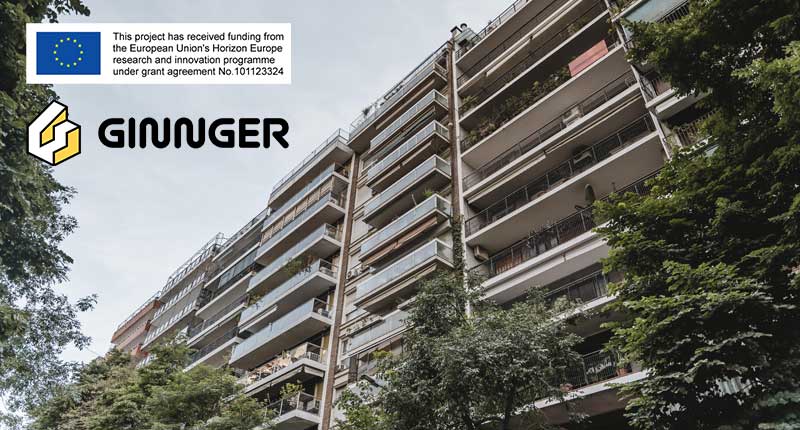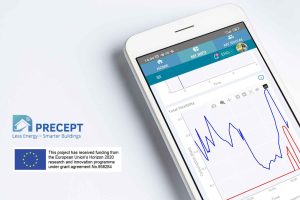The intensification of the climate crisis has made it a priority for Europe to promote the energy transition. To drive this transition, changes must be implemented in our environment: homes, businesses, schools, neighborhoods and public spaces. In response to this urgency, the GINNGER project has arisen, aimed at regenerating neighborhoods and other built-up areas through the active collaboration of the various actors involved, including our company, which is coordinating one of the pilots in Spain and will contribute its experience in the energy sector. In this way, in MIWenergía we have already participated in eleven European innovation projects, promoting energy efficiency, among other aspects.
The company involved in the project
With the financial support of the Horizon Europe Program and a budget of around six million euros, GINNGER involves 24 partners from eight European countries.
This project, coordinated by the Energy Resources and Consumption Research Center (CIRCE), will apply the solution developed in six demonstrators throughout Europe, being implemented in Spain in the cities of Langreo and Murcia. In MIWenergíawe are in charge of managing the Murcia pilot together with the Murcia City Council, developing a plan to implement regeneration actions that improve energy efficiency and promote sustainable mobility in the city.
Thanks to its co-creation methodology, diverse members of society will be involved in decision-making, promoting resilient, affordable, circular and inclusive regeneration.
GINNGER for city regeneration
During the four years of project implementation, a participatory methodology will be implemented that will take into consideration the diverse perspectives of community members. To this end, the role of "Green Neighborhood Promoter" has been established, who will ensure that all the ideas of the actors involved in the pilots are heard.
More than 950 residents from both urban and rural areas will benefit from the GINNGER project, demonstrating the viability of social innovation and digital solutions in different environments, cultures and socio-economic conditions across Europe.
The GINNGER project in Spain
The influence of the GINNGER project will be felt in two Spanish cities: Langreo, located in the Principality of Asturias, and Murcia, in the Region of Murcia.
In Langreo, social housing will be renovated to combat energy poverty and an Energy Community will be created to provide clean energy to a school, residential and public buildings.
On the other hand, in Murcia, a plan will be developed to improve the energy efficiency of residents by monitoring the energy consumption of equipment and introducing more environmentally friendly transportation solutions.
MIWenergía leads the pilot in Murcia
The regeneration actions of the Murcian pilot will be carried out in the neighborhood of Joven Futura, taking charge from MIWenergía of its leadership and implementation of actions for the improvement in energy efficiency, and acting as "Green Neighborhoods Promoter".
On the one hand, the energy consumption of some of the homes in the neighborhood will be monitored so that strategies can be designed to reduce energy demand in the area. In addition, the development of energy communities will be promoted, for which a plan will be designed based on previous experiences in the area, where there are already two photovoltaic generation facilities of collective self-consumption, which share the generation among some neighbors. In them, other pilot experiences have already been carried out in European Projects, such as Utilitee, DRIMPAC, PRECEPT or De-Risk. Finally, the needs of the neighborhood will be studied for the promotion of sustainable mobility and the improvement of the neighborhood's connections with the city center. For the development of all these actions, co-creation methodologies will be applied with the participation of the neighbors.
As a result of these actions, a 15% increase in energy efficiency and a 15% reduction in carbon dioxide emissions in the area are expected.
Thirteen digital tools to drive the energy transition
The co-creation methodology adopted in the project will be reinforced by thirteen digital tools, essential for designing, planning and implementing regeneration plans. These solutions are organized in four main areas: energy, renovation, resources and mobility, developed to enhance the energy efficiency, livability and sustainability of buildings and public spaces.
Through the collaboration of various social agents, the door is open to significant achievements in the fight against climate change. The GINNGER project is an example of this, since its implementation will bring social, technological and economic benefits, improving the energy efficiency of different European localities through the regeneration of their neighborhoods.




